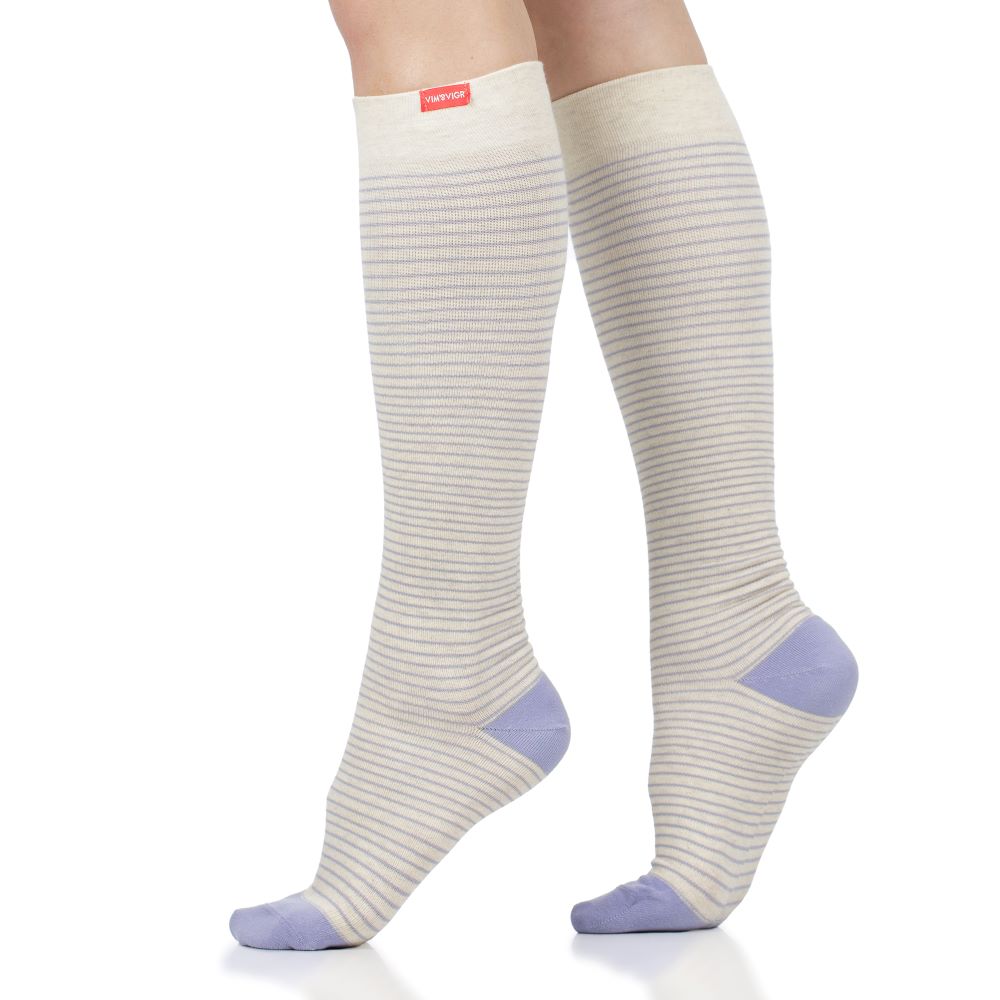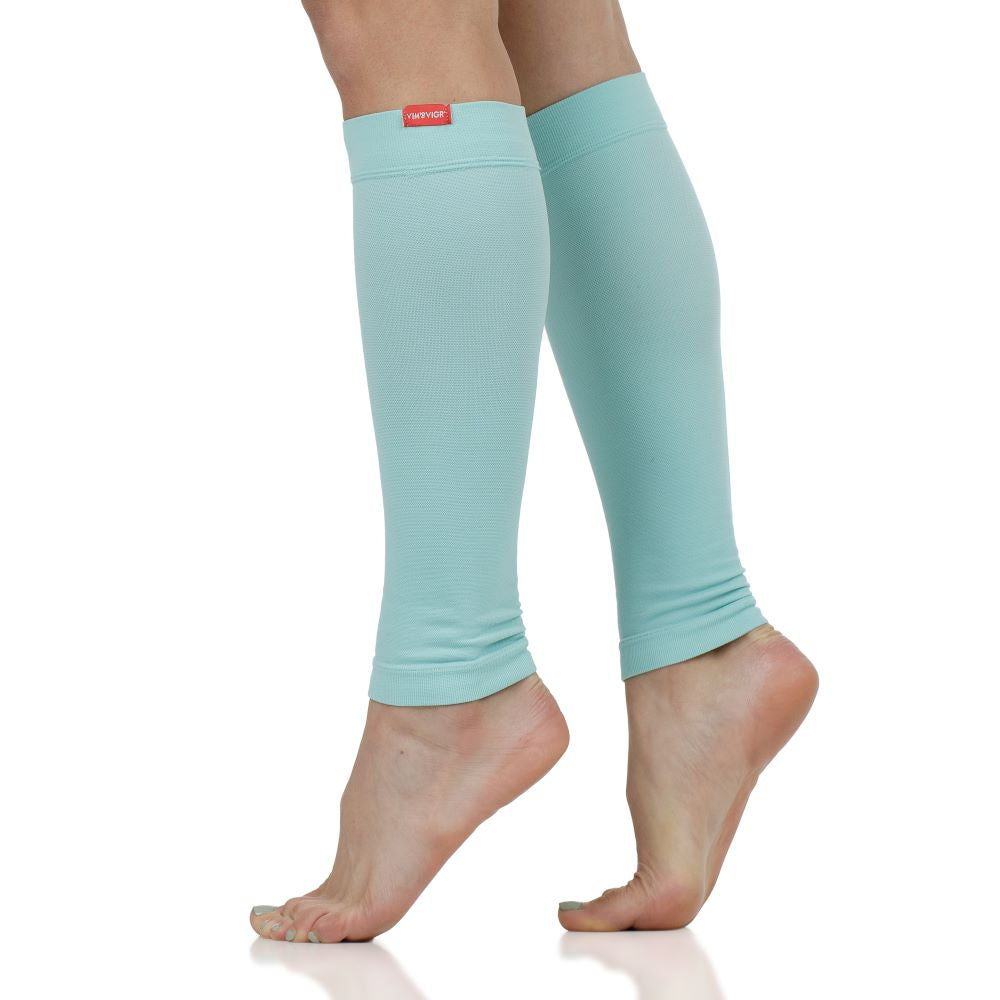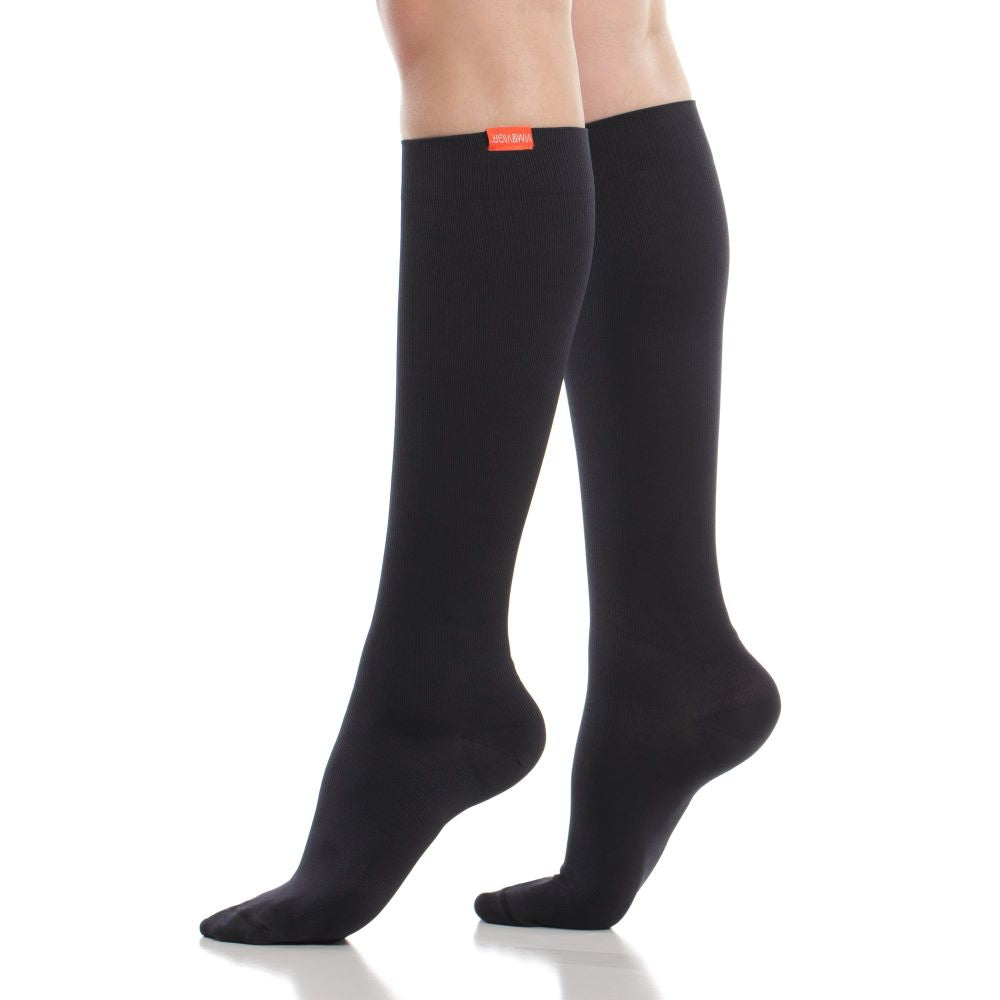Can Compression Socks Affect Your Blood Pressure?
Compression socks and stockings are popular for a reason. They help those on their feet all day, or traveling long distances without the opportunity to move about (like on a plane), to deal with swelling, discomfort and aches and pains. They’re also great for athletes, those recovering from surgery, and many more conditions, from edema to pregnancy to hypermobility.
However, since compression socks affect your blood circulation, you may be wondering if they have an impact on your blood pressure. To answer this, we will explore how compression garments influence your blood flow, what is the effect of compression socks on either high or low blood pressure, and who can benefit from compression socks if they struggle with their blood pressure. We will also look at some tips on wearing compression socks.

How Compression Socks Affect Blood Pressure + Why
Firstly, let’s take a look at how compression socks work on your body. They apply a gentle pressure to the lower legs, which helps to improve blood flow and prevent swelling. Since there is an impact on your blood circulation, there can be knock-on effects on your blood pressure as well.
Blood travels through your body thanks to being pumped out by the heart. With every heartbeat, the heart contracts and creates pressure in the circulatory system. Blood pressure is also caused by the difference in pressure between the heart and the arteries. There are many other factors that impact blood pressure, but you can see that it is closely connected with how easily blood can flow through the vessels.
The easier blood flows, the less likely you are to develop high blood pressure (excluding other health conditions). Therefore, we can consider compression socks to have a positive impact on those with higher blood pressure since they promote good blood flow. Compression stockings can also help avoid blood pooling in your lower extremities when you’re not moving for a long time. This means they can help fight low blood pressure conditions like orthostatic hypotension, where you could suffer from lightheadedness when you stand up after a long time spent sitting or lying down.
The Effects of Compression Socks on High Blood Pressure
For those with high blood pressure, compression socks help maintain a good blood flow, reducing workload on the heart and helping to prevent any blockages along the way. As blood flows through the veins, compression garments help push it upwards towards the heart. This has been shown to help fight the development of blood clots, and even more serious conditions like deep vein thrombosis.
If you already have high blood pressure, wearing compression socks should not cause you any health concerns. Ensuring that they fit well, are not too tight or uncomfortable, and are made from the most appropriate fabric for what you’re about to do, are all crucial things to be mindful of.
The Effects of Compression Socks on Low Blood Pressure
If you suffer from low blood pressure, you could expect that compression socks may make matters worse by “blocking” your blood flow. This is a common misconception around wearing compression garments. However, if you wear the correct compression levels and size, you should not have to worry about blood being prevented from circulating correctly.
Moreover, compression socks have been shown to help with orthostatic hypotension. This is low blood pressure caused by sitting still or lying down for a long period of time. People suffering from this condition get dizzy or lightheaded when they stand up. However, if you wear compression socks for low blood pressure, you should expect your blood flow to the lower limbs to be stimulated during the sitting or lying down period. Graduated compression socks are tighter towards the ankles and less tight towards the knee, supporting blood flow back up towards the heart. This is why they prevent swelling and potential blood clots, and they’ll ensure that you don’t get that lightheaded feeling when you stand up.

Who Can Benefit from Compression Socks for Blood Pressure?
Generally speaking, compression socks can be beneficial in a large number of cases, including:
- Athletes who want to improve circulation, reduce swelling, and speed up recovery after hard efforts;
- Travelers who want to prevent blood clots during long flights or car rides;
- Pregnant women who experience swelling and circulation issues;
- Those with circulation issues such as varicose veins or lymphedema.
In the case of blood pressure problems, the benefits of compression socks come from the support they provide to your circulation overall. As graduated compression stockings, socks and leggings help push blood back up from your lower extremities towards the heart, they reduce the risk of blood clots, edema and DVT setting in. As a result, a healthy, well-functioning circulatory system has no reason to lead to low or high blood pressure, barring other issues.
Who Should Avoid Compression Socks for Blood Pressure
While compression socks can be beneficial for many people, there are some situations in which a medical professional would advise against wearing them. The Oklahoma Heart Institute highlights that patients suffering from peripheral vascular disease should avoid them, as they can make the condition worse.
Diabetic patients have an increase of complications from wearing compression socks for blood pressure, as neuropathy could prevent them from feeling changes in their feet. In their case, they can still wear compression garments on their lower legs provided that they pay close attention to the right size and pressure levels. They should also check the color of their toes (darkening or bruising are obviously bad signs). Finally, they should always ensure that compression socks are worn properly, without bunching and cutting off circulation.

If you suffer from allergies or skin infections, it may be a good idea to be extra careful when picking compression socks. You don’t necessarily need to avoid them. In fact, fabrics such as Merino wool are great for sensitive and allergy-prone skin, as they are naturally antibacterial and hypoallergenic. Still, consider wearing compression socks on clean, dry skin, and for incremental periods of time until you become comfortable with the fabric and the sensation from extra pressure applied to your lower legs. In time, you could even wear your socks for 24 hours in a row!
How to Wear Compression Socks for Blood Pressure
To get the most benefit from compression socks, it's important to wear them properly. This means ensuring that they are the right size for you, that the fabric is appropriate for your condition and/or activity levels, and that you put them on correctly.
- Choose the right size: Take measurements to ensure that your socks will fit well, applying some pressure without becoming uncomfortable. Use our guide to help you;
- Put them on correctly: Roll the sock down to the heel and then pull it up over the foot and calf. You want to avoid any bunching which can become painful and have negative side effects;
- Check the pressure levels: Compression socks come in a variety of compression levels, so it’s a good idea to start with lower levels until you get used to them, then move up if needed. There are also pressure levels that are medically prescribed.
- Wear them during the day at first, and in incremental stretches of time: To keep an eye on the pressure levels and any possible effects on your skin or extremities, start by wearing your socks for a few hours at a time, during the day, when you can check for any changes. Once you’re more at ease, you can increase the period of time you wear your socks for, and even experiment with wearing them in bed.
It’s important to remember that the effect of compression socks for blood pressure depends on the type and strength of compression. You should always check with your doctor to find out what compression level is the most appropriate for your condition.
The Best Compression Socks for Blood Pressure
Finding compression stocking or socks that can help keep your blood pressure healthy is a matter of choosing good materials, great quality, and perfect fit. It’s also always important to check with your doctor, especially if you suffer from medical conditions or if you have a diagnosed hypotension or hypertension.
When worn properly, compression socks can help prevent swelling, pain and discomfort in the lower limbs and improve your blood circulation and overall wellbeing.
Have a look at our catalog and see what’s best for you!



















Leave a comment